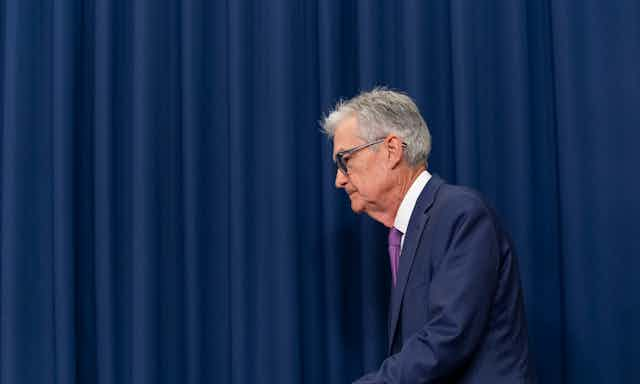If there’s one thing you can say about Fed policymakers, it’s that they don’t make decisions on a whim. When the Federal Open Market Committee met on Jan. 31, 2024, it held interest rates steady – as most observers expected. That marks six months since the Fed last changed the base rate.
And people should expect to wait a little while more: Fed Chair Jerome Powell said a rate cut was “not likely” to come at the next meeting in March. But over the course of his news conference after the meeting, he emphasized that nothing is set in stone.
The Federal Reserve has what is called a dual mandate: Its job is to achieve maximum employment and keep prices stable. Often there’s a trade-off between these goals: Cutting rates often helps with the former, while lowering them helps with the latter.
And in recent months, controlling inflation has been the focus of Fed policy. In his remarks on Jan. 31, Powell made it clear that Americans shouldn’t expect the Fed to do anything to rates until the U.S. gets closer to its target of 2% inflation. And that could take some time.
There’s a reason Powell and his fellow policymakers are focused on the 2% inflation target. So long as consumer price index inflation is above 2%, the concern is that any lowering of interest rates could stimulate the economy too much and reignite inflation.
Still, the federal funds rate, which helps determine mortgage and loan rates and quite a bit more, remains at 5.5%, higher than it’s been in 16 years. The Fed has raised rates 11 times since early 2022.
That aggressive rate-hiking has had the desired effect of putting the brakes on the economy. But it comes with some pain for borrowers – and some are now eager to bring rates back down.
Cutting rates usually makes sense when the economy is getting significantly worse, and there’s not much reason to think that’s happening now. Fourth-quarter gross domestic product grew 3.3% on an annualized basis, ending 2023 on a strong note. The economy added more than 2 million jobs over the course of 2023. And consumer price index inflation is running at about 3.3% in December 2023.
“This is a good situation,” Powell said during his news conference. “Let’s be honest: This is a good economy.”
So what comes next? The Fed recently indicated that it expects to cut rates three times in 2024. But as Powell was at pains to make clear, if the data changes, the Fed’s decision-making will, too.
The labor market data looks relatively sunny. There’s greater balance between the number of people who want jobs and the number of open positions than there was last year. Wage growth looks likely to continue at current rates. So unless there’s a sharp increase in unemployment, which doesn’t seem likely at the moment, there seems to be little reason to cut interest rates.
There’s always a concern that keeping rates too high for too long may tip the economy into a recession. But recent history doesn’t suggest that will happen.
Taking the long view
Taking a historical perspective can be revealing. The 30-year fixed mortgage rate is about 6.6% – high by recent standards. However, back in 1998, the year I bought my first home, the rate was 6.9%. At that time, it was a real deal!
Mortgage rates have been as high as 18% if you go back to 1981. That’s not to say either I or the Fed believe there’s room to increase rates any time soon – just that rates are nowhere near record highs.
Powell did say there’s no reason for any rate increases, so the current Federal funds rate of 5.5% is likely the current cyclical peak.
The next meeting will start March 19. The odds are that the U.S. economy will continue to grow, and inflation will continue to moderate – however slowly. So I would expect the Fed to follow through on Powell’s noncommittal prediction and hold off on cutting rates until later in the year.
So there’s no soft landing yet – Powell said as much. But we look surprisingly close.

